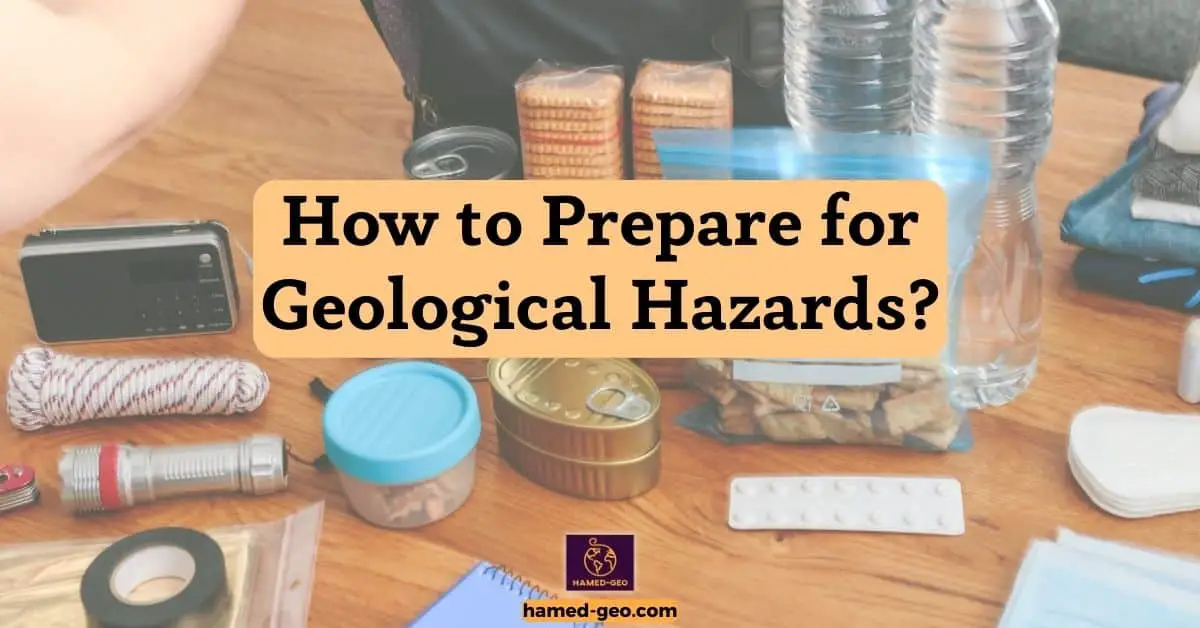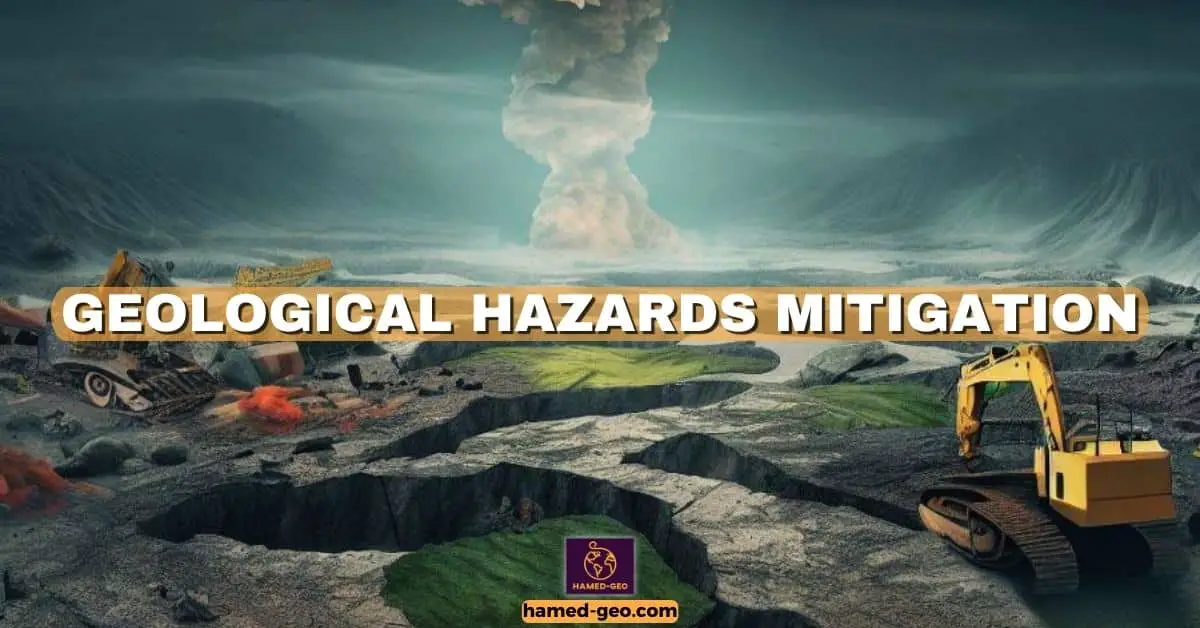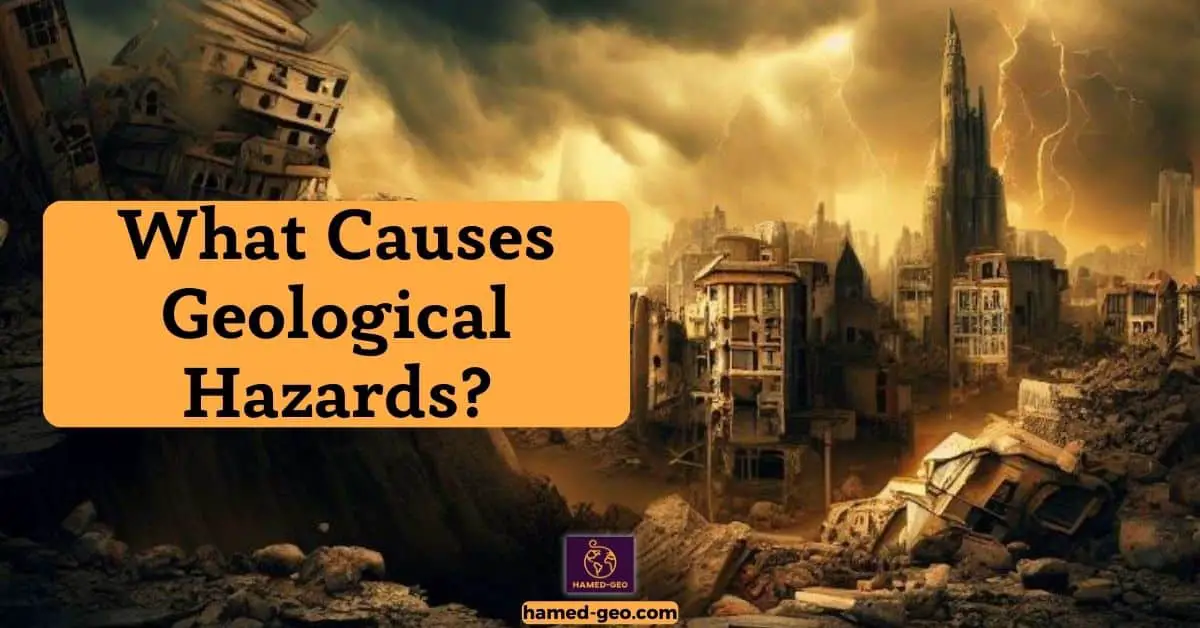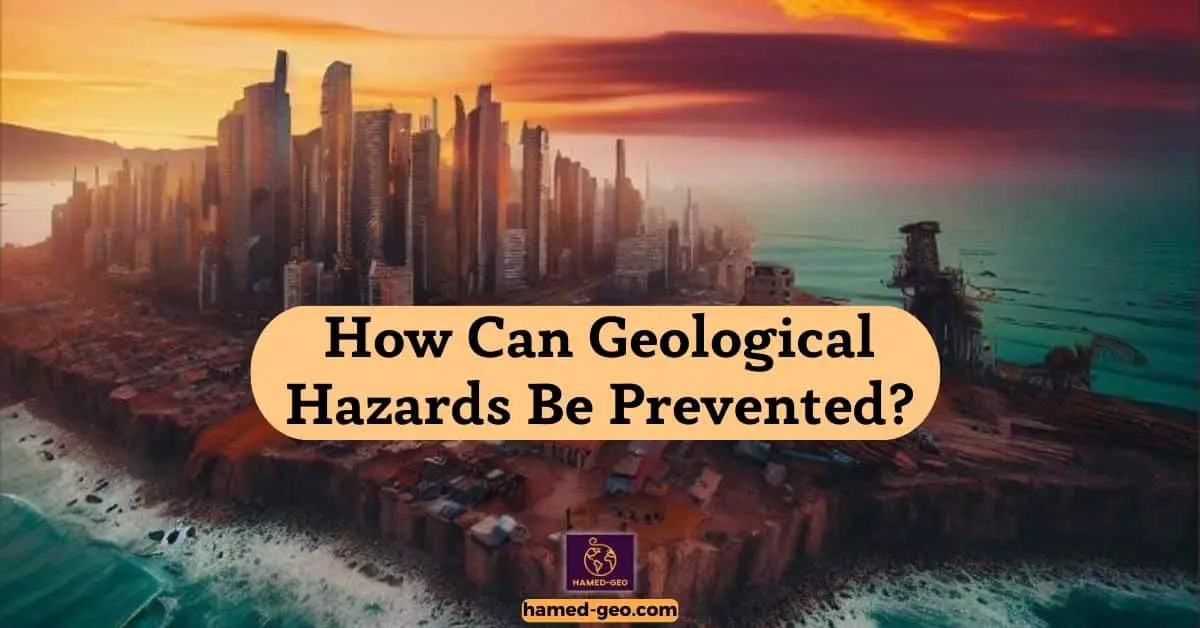Geological hazards, such as earthquakes, volcanic eruptions, and landslides, pose significant risks to both human life and infrastructure. It is essential to prepare effectively for these hazards to minimize their impact and protect communities. This article provides a comprehensive guide on how to prepare for geological hazards, drawing on scientific research, expert opinions, and historical data.
First, it is crucial to understand the specific geological hazards that exist in a particular region. This can be achieved by studying geological maps, consulting experts, and analyzing historical records of past incidents. By identifying the potential risks, communities can develop appropriate strategies and allocate resources accordingly. Second, establishing early warning systems is paramount in mitigating the impact of geological hazards. These systems can provide timely alerts, allowing people to evacuate to safer locations and take necessary precautions. Additionally, conducting regular drills and training programs can enhance preparedness and ensure a prompt response in case of an actual event.
Identify the Risk
To effectively identify the risk of geological hazards, it is crucial to learn about these hazards and understand their potential impact. This involves identifying vulnerable areas based on geological characteristics such as soil type and topography. By assessing the potential impact of geological hazards on human settlements and infrastructure, we can determine the level of risk present. Incorporating risk assessment models allows for the prioritization of areas for preparedness and mitigation measures. These models provide a scientific approach to analyzing the risk and allocating resources accordingly. By following these steps, we can better understand and manage the risk of geological hazards in a systematic and efficient manner.
Learn About Geological Hazards
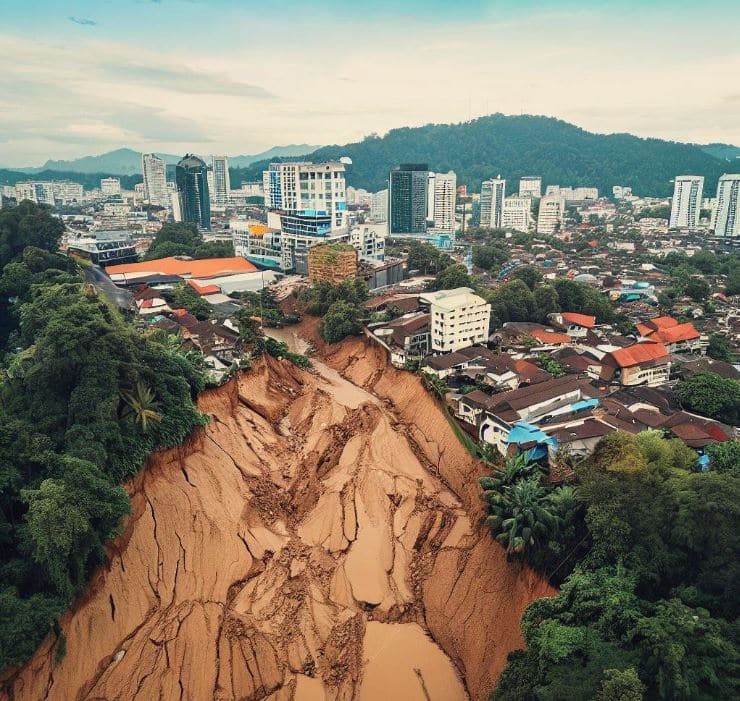
To effectively manage and mitigate the risks associated with geological hazards, it is crucial to have a comprehensive understanding of these hazards. Learning about geological hazards involves studying the various types of hazards that can occur in a specific area, such as earthquakes, landslides, or volcanic eruptions. This knowledge allows researchers and policymakers to develop strategies and implement measures to protect human settlements and infrastructure.
Understanding the geological characteristics of an area is also essential in identifying vulnerable regions. Factors such as soil type and topography can greatly influence the susceptibility of an area to certain hazards. For example, areas with loose or unstable soil are more prone to landslides, while regions near fault lines are at a higher risk of earthquakes.
Understand the Risk in Your Area
Understanding the risk in your area is crucial for effective preparedness and mitigation measures against geological hazards. By gaining knowledge about the specific geological characteristics of an area, such as soil type and topography, it becomes possible to identify vulnerable locations that are more prone to these hazards. For instance, areas with loose soil or steep slopes are at higher risk of landslides or soil erosion. By understanding these factors, authorities can develop strategies to minimize the impact of such hazards on human settlements and infrastructure. Risk assessment models play a pivotal role in this process, as they help prioritize areas for necessary preparedness and mitigation measures. These models integrate various data sources, including geological surveys, historical records, and remote sensing, to provide a comprehensive understanding of the risk landscape.
Develop an Emergency Plan
Developing an emergency plan is crucial in ensuring the safety and well-being of one’s family. Creating a Family Emergency Plan involves identifying escape routes, establishing meeting points, and designating a family communication plan. Researching Local Emergency Shelters is essential to know the closest shelter locations and their facilities. Assembling an emergency kit should include essential supplies such as food, water, medications, and first-aid items. Identifying emergency contacts is important to have a list of individuals who can provide assistance during emergencies.
Create a Family Emergency Plan
To ensure the safety and well-being of your family during an emergency, it is crucial to create a family emergency plan. This plan will serve as a guide for everyone in your household, outlining what to do and where to go in the event of a disaster. Start by discussing potential emergency scenarios with your family and establish meeting points both inside and outside of your home. Assign roles and responsibilities to each family member, ensuring everyone knows what to do. Research local emergency shelters in your area beforehand and include their locations and contact information in your plan. Additionally, assembling an emergency kit is essential for sustaining your family during an emergency. Include essential items such as non-perishable food, water, first aid supplies, and important documents.
Research Local Emergency Shelters
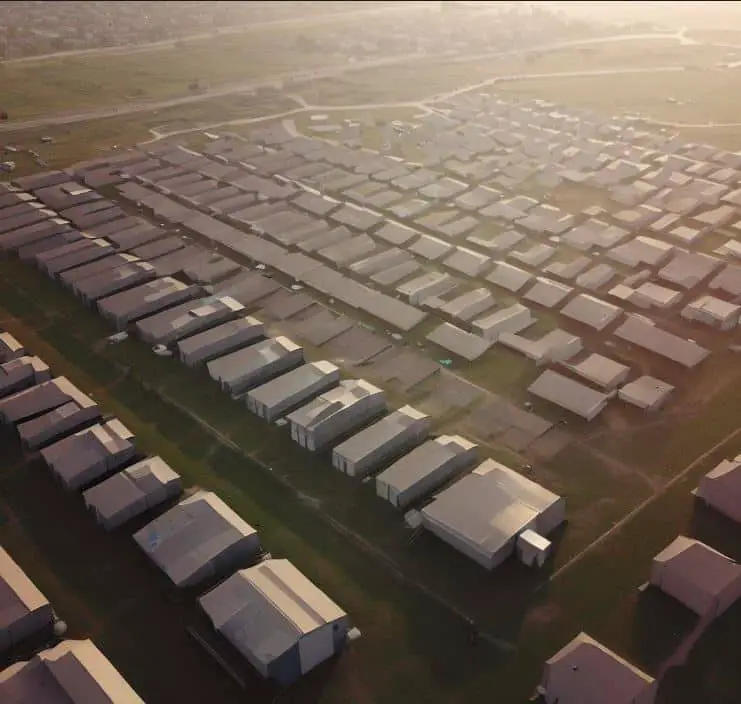
One important aspect of your emergency plan is to research local emergency shelters. These shelters provide a safe place to stay during a disaster when it is not safe to remain in your home. It is essential to know the locations of these shelters in your area and the procedures for accessing them. Some emergency shelters may require pre-registration, so it is important to be aware of any registration processes and deadlines. Researching local emergency shelters in advance will help you and your family make informed decisions during an emergency situation.
Prepare Your Home
To prepare your home for an earthquake, there are several important steps you should take. First, secure items that could fall during the shaking, such as heavy furniture and appliances. This will help prevent injuries and damage to your property. Secondly, it is essential to install earthquake shut-off valves on your gas lines. These valves automatically shut off the gas supply in the event of an earthquake, reducing the risk of fires and explosions. Additionally, it is crucial to regularly inspect structures and foundations for any signs of damage or weakness. This will ensure the structural integrity of your home during an earthquake.
Secure Items that Could Fall
To ensure the safety of your home and its occupants during an earthquake, it is crucial to secure items that could fall. Unsecured furniture, appliances, and decorative objects can become hazardous projectiles during strong seismic activity. Start by anchoring heavy furniture, such as bookshelves and cabinets, to the wall using brackets or straps. Additionally, consider installing latches or locks on cabinets to prevent their contents from spilling out. Secure valuable or fragile items, like mirrors and artwork, by using earthquake putty or adhesive hooks. It is also important to ensure that light fixtures are well-secured and that heavy objects are stored on lower shelves. By taking these preventive measures, you can significantly reduce the risk of injury and damage caused by falling objects during an earthquake.
Install Earthquake Shut-Off Valves
To further protect your home during an earthquake, it is crucial to install earthquake shut-off valves. These valves are designed to automatically shut off the gas supply to your home in the event of an earthquake, reducing the risk of gas leaks and potential fires.
Earthquake shut-off valves use a motion-sensitive mechanism to detect seismic activity. When an earthquake occurs, the valves are triggered and close off the gas flow immediately. This prevents gas from escaping into your home and eliminates the possibility of an explosion or fire caused by a ruptured gas line.
By installing earthquake shut-off valves, you add an extra layer of safety to your home and protect your family and property from potential disaster.
Inspect Structures and Foundations
To ensure the safety and stability of your home during an earthquake, it is crucial to thoroughly inspect the structures and foundations. Begin by examining the walls, ceilings, and floors for any visible cracks or signs of damage. Pay close attention to areas where different materials meet, such as corners and joints, as these are common weak points. It is also important to inspect the foundation for any shifting or settling, as this can lead to structural issues. Engage the services of a qualified professional to assess the overall integrity of your home’s foundation and recommend any necessary repairs or reinforcements. By identifying and addressing potential weaknesses in your home’s structure, you can significantly reduce the risk of damage and ensure the safety of your family during an earthquake.
Purchase an Emergency Kit
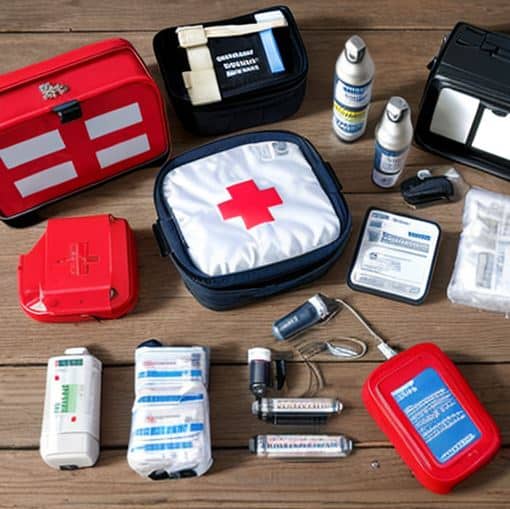
When purchasing an emergency kit, it is important to choose essential supplies that will help you in various emergency situations. These supplies should include items such as food, water, first aid supplies, and tools. Additionally, it is crucial to pack the kit in a way that allows for easy accessibility. This means organizing the supplies in a logical manner and labeling them for quick identification. Furthermore, consider including items such as an emergency radio for communication, emergency blankets for warmth, and a whistle and signal mirror for signaling for help. These additions can greatly enhance the effectiveness of an emergency kit.
Choose Essential Supplies
In order to be fully prepared for any emergency situation, it is crucial to choose essential supplies for your emergency kit. These supplies should be carefully selected to ensure that you have everything you need to survive and stay safe during a crisis.
When choosing essential supplies, consider the basic necessities of life: food, water, and shelter. It is recommended to have at least a three-day supply of non-perishable food items that require no cooking or refrigeration. Canned goods, dried fruits, and energy bars are all great options. Additionally, water is vital for survival, so be sure to include at least one gallon of water per person per day.
Pack the Kit for Easy Accessibility
To ensure that you can quickly access your emergency supplies when needed, it is essential to pack the emergency kit in a way that promotes easy accessibility. During a crisis, time is of the essence, and fumbling through a disorganized kit can lead to unnecessary delays and increased stress.
Organize your kit by placing frequently used items in easily accessible compartments. Keep items such as first aid supplies, flashlight, and batteries in separate pockets or compartments. This will allow you to grab them quickly without having to search through the entire kit. Additionally, label each compartment with its contents, as this will help you locate items even in low-light conditions or high-stress situations.
Educate Yourself and Your Family
Educating yourself and your family about emergency protocols is crucial to ensure safety in times of crisis. Start by learning about warning signs and early detection methods specific to your area, such as tornado sirens or earthquake tremors. Understanding evacuation routes is another essential step, as knowing the quickest and safest way to leave your home or workplace can save lives. Additionally, create an emergency preparedness plan that includes gathering necessary supplies and establishing safe meeting points. By being informed and prepared, you can minimize the risks and navigate through emergencies with confidence.
Learn About Emergency Protocols
In order to ensure the safety and well-being of your family during emergencies, it is essential to learn about emergency protocols.
During times of crisis, knowing the appropriate steps to take can make a significant difference. Familiarize yourself with the emergency protocols established by relevant authorities, such as local government agencies or emergency management organizations. These protocols outline the necessary actions to be taken in various emergency situations, including natural disasters, medical emergencies, or acts of violence.
Staying informed about emergency protocols allows you to respond effectively and swiftly when faced with an unexpected event. It ensures that you and your family are prepared and equipped to handle emergencies, minimizing the potential risks and damages. By understanding these protocols, you can confidently take the necessary actions to protect yourself and your loved ones.
Understand Evacuation Routes
To ensure the safety of you and your family during an emergency, it is crucial to understand evacuation routes in your area. Evacuation routes are predetermined paths that guide individuals to safety in the event of a disaster. These routes are typically established by local authorities and are designed to minimize risks and facilitate efficient evacuations. By familiarizing yourself with these routes, you can enhance your preparedness and act swiftly when necessary.
To learn about evacuation routes, consult local emergency management agencies or visit their websites. They often provide detailed maps and instructions on the best way to evacuate in different scenarios. Additionally, pay attention to emergency alerts issued by authorities, as they may contain vital information about evacuation routes.
Stay Alert and Informed

To stay alert and informed during emergencies, it is crucial to monitor local weather reports, sign up for alerts from local emergency services, stay updated with local news alerts, and pay attention to government advisories. Local weather reports provide accurate information about weather conditions that can help individuals prepare for potential hazards. Signing up for alerts from local emergency services ensures timely notifications about any emergencies or evacuation orders. Local news alerts provide valuable information regarding ongoing emergencies and safety precautions. Government advisories offer guidance and recommendations during emergencies. Additionally, mobile apps for emergency alerts provide real-time notifications and updates to ensure individuals are well-informed and can take necessary actions.
Monitor Local Weather Reports
To ensure your safety and the safety of your loved ones, it is crucial to stay informed and aware of any potential threats. One of the most effective ways to achieve this is by monitoring local weather reports. By keeping a close eye on the weather conditions in your area, you can be prepared for any severe weather events that may arise.
Local weather reports provide valuable information about upcoming storms, hurricanes, or other weather patterns that could pose a risk to your safety. By paying attention to these reports, you can take the necessary precautions and make informed decisions regarding your safety. Whether it’s securing your property, evacuating if necessary, or simply staying indoors during a storm, being aware of the weather conditions can make all the difference.
Sign up for Alerts From Local Emergency Services
To ensure the safety of yourself and your loved ones during emergency situations, it is crucial to stay informed about the latest developments. One effective way to stay updated is by signing up for alerts from local emergency services. By doing so, you will receive timely notifications regarding potential hazards or emergencies in your area. These alerts can provide crucial information, such as severe weather warnings, evacuation orders, or public safety advisories.
Signing up for these alerts is a simple process. Most local emergency services have websites where you can register your contact information. Once registered, you will start receiving alerts via text messages, emails, or phone calls, depending on your preferred method of communication.
Practice Regularly
Regular practice is essential for effective emergency preparedness. One way to ensure readiness is to hold family emergency drills. These drills simulate various emergency scenarios and allow family members to practice safety protocols. Additionally, conducting regular evacuation practices is crucial in preparing for potential disasters. This ensures that everyone knows the designated evacuation routes and procedures. Moreover, communication exercises can be conducted to test the effectiveness of communication channels during emergencies. By practicing these drills and exercises, families can enhance their emergency preparedness and minimize the risks associated with unforeseen events.
Hold Family Emergency Drills
To ensure the safety and preparedness of your family during emergencies, it is crucial to hold family emergency drills on a regular basis. These drills serve as practice sessions that familiarize each family member with the necessary actions to take in the event of an emergency. By simulating various emergency scenarios, such as fires, natural disasters, or home invasions, families can refine their response strategies and identify potential weaknesses in their emergency plans.
During these drills, it is important to conduct regular evacuation practices to ensure that everyone knows the designated safe zones and escape routes within and outside the house. This practice will help family members react quickly and efficiently when faced with a real emergency situation, reducing the likelihood of panic and confusion.
Conduct Regular Evacuation Practices
To ensure the safety and preparedness of your family in the event of an emergency, it is crucial to conduct regular evacuation practices. These practices help simulate real-life scenarios and allow everyone to become familiar with the necessary procedures and routes to follow. By implementing these drills, you can identify any weaknesses in your emergency plans and make the necessary adjustments.
During these practices, it is important to focus on various aspects of evacuation, such as evacuation plans, communication exercises, and emergency preparedness drills. Evacuation plans should outline specific actions to be taken in different types of emergencies, including fires, natural disasters, or intruder situations. Communication exercises ensure that all family members understand how to effectively communicate and relay important information during a crisis.
Protect Your Property
Protecting your property is crucial to minimize the damage caused by natural hazards. Earthquake bracing is an effective method to secure your home by reinforcing its foundation and structural components. Installing flood barriers around your home can prevent water from entering and damaging your property during floods. Reinforcing your roof with sturdy materials and proper installation techniques can withstand high winds and prevent it from being lifted off during hazardous weather events. Creating a defensible space around your property by clearing vegetation and maintaining landscaping can reduce the risk of wildfire damage. Lastly, installing a sump pump or drainage system helps prevent flooding and water damage to your property.
Secure Your Home with Earthquake Bracing
Ensuring the safety of your property during an earthquake is crucial, and one effective measure you can take is to secure your home with earthquake bracing. Earthquake bracing involves reinforcing the structural elements of your home, such as walls, foundations, and connections, to withstand the intense shaking that occurs during seismic events. By implementing earthquake bracing, you can significantly reduce the risk of structural damage and collapse, protecting both your property and the lives of those inside.
There are various methods of earthquake bracing, including the installation of steel braces or plywood panels to strengthen weak areas. Additionally, securing heavy furniture and appliances to the walls can prevent them from toppling over and causing injuries or further damage.
Install Flood Barriers Around Your Home
Installing flood barriers around your home is an essential step in protecting your property from the devastating effects of flooding. Flood barriers are designed to prevent water from entering your home and causing damage. They can be installed around doors, windows, and other vulnerable areas to create a watertight seal.
There are several types of flood barriers available, including temporary barriers that can be quickly deployed during an emergency and permanent barriers that are installed permanently around your home. Temporary barriers such as sandbags are cost-effective and easy to use, but they require proper placement and maintenance. Permanent barriers, on the other hand, provide long-term protection and can be customized to fit the specific needs of your property.
Have a Financial Plan
Having a financial plan is crucial for individuals and families to ensure economic stability and security. Two important subtopics to consider are setting aside money for emergencies and obtaining insurance coverage for natural disasters. Saving money for unexpected events such as job loss, medical emergencies, or major repairs can provide a safety net and prevent financial hardship. Additionally, obtaining insurance coverage for natural disasters such as earthquakes, floods, or hurricanes can protect individuals from significant financial losses. By preparing for emergencies and mitigating risks, individuals can safeguard their financial well-being and have peace of mind.
Set Aside Money for Emergencies
Protecting your property is just the first step towards securing your financial future. To truly be prepared for any unforeseen circumstances, it is crucial to set aside money for emergencies.
Setting aside money for emergencies is an essential part of any comprehensive financial plan. While it may be difficult to anticipate the exact nature or timing of emergencies, having a financial cushion can provide a sense of security and peace of mind. Experts recommend setting aside at least three to six months’ worth of living expenses in an emergency fund. This fund can help cover unexpected medical bills, job loss, or major repairs to your property. By consistently contributing to your emergency fund, you can build a solid financial foundation and be better prepared to weather any storms that come your way.
Obtain Insurance Coverage for Natural Disasters
In addition to taking steps to protect your property, it is crucial to have a solid financial plan in place. One aspect of this plan should be to obtain insurance coverage for natural disasters. Natural disasters such as hurricanes, earthquakes, and floods can cause extensive damage to your property, and without insurance, the financial burden can be overwhelming.
When seeking insurance coverage for natural disasters, it is important to carefully assess your needs and choose a policy that provides adequate protection. Consider the specific risks in your area and ensure that your policy covers these events. Additionally, review the policy limits and deductibles to determine if they align with your financial situation.
*Obtaining insurance coverage for natural disasters can provide peace of mind and financial security in the face of unforeseen events.
Take an Emergency Preparedness Course
Taking an emergency preparedness course can provide individuals with a wealth of knowledge and skills to effectively respond to various emergencies. Learning lifesaving skills such as CPR and first aid can be crucial in saving lives during critical situations. Moreover, such courses offer valuable tips on how to assess risks, develop emergency plans, and communicate effectively during emergencies. Participants are also taught about the importance of assembling an emergency supply kit that includes essential items such as food, water, and medications. Additionally, these courses focus on learning about specific geological hazards in one’s region, enabling individuals to be better prepared for potential disasters.
Learn Lifesaving Skills
Learning lifesaving skills is crucial in emergency situations, as it can mean the difference between life and death. By taking an emergency preparedness course, individuals can acquire the necessary knowledge and techniques to provide immediate assistance to those in need. These courses typically cover a range of topics, including CPR (Cardiopulmonary Resuscitation), first aid, and basic medical procedures. Participants learn how to assess and respond to various emergencies, such as cardiac arrest, choking, and severe bleeding. Additionally, they gain a deeper understanding of the human body, enabling them to recognize signs of distress and administer appropriate aid. By equipping themselves with these lifesaving skills, individuals can become valuable assets in times of crisis, potentially saving lives and minimizing the impact of emergencies.
Receive Valuable Tips
In order to be fully prepared for any emergency situation, it is crucial to equip yourself with the necessary skills and knowledge. Taking an emergency preparedness course can provide you with valuable tips and information that can potentially save lives.
Learn lifesaving skills: These courses often cover basic first aid and CPR, which are essential skills in emergency situations. Learning how to properly administer CPR and provide basic medical aid can make a significant difference in the outcome of an emergency.
Receive valuable tips: Emergency preparedness courses offer valuable tips on how to react and respond during different types of emergencies. These tips may include recognizing signs of a heart attack or stroke, managing severe bleeding, or safely evacuating a building during a fire.
Practice Safety During Geological Events
In order to ensure safety during geological events, it is crucial to learn how to respond effectively. Earthquakes require specific actions, such as dropping, covering, and holding on. Floods and landslides also pose significant risks, and following best practices is essential. For instance, during a flood, it is important to move to higher ground and avoid driving through flooded areas. Tsunamis necessitate immediate evacuation to designated safe zones. Additionally, landslide prevention techniques can help mitigate the risk and damage caused by these events.
Learn How to Respond During an Earthquake
To further enhance your preparedness for emergency situations, it is crucial to learn how to respond during an earthquake. Earthquakes are natural disasters that can cause significant destruction and pose serious threats to human life. Knowing the appropriate actions to take during an earthquake can help minimize injuries and increase your chances of survival. One essential step is to “Drop, Cover, and Hold On.” During an earthquake, quickly drop to the ground, take cover under a sturdy piece of furniture, and hold on until the shaking stops. This position protects you from falling objects and reduces the risk of injury. Additionally, it is important to familiarize yourself with evacuation routes and emergency procedures specific to your area. By understanding the proper response to an earthquake, you can effectively protect yourself and those around you.
Follow Best Practices During a Flood or Landslide
After learning how to respond during an earthquake, it is essential to be well-informed about the best practices to follow during a flood or landslide. These geological events can cause significant damage and pose serious risks to life and property. In order to ensure safety, it is crucial to adhere to the following guidelines. Firstly, stay informed by monitoring weather reports and updates from local authorities. This will enable you to take timely action and evacuate if necessary. Secondly, avoid areas prone to flooding or landslides and choose higher ground for shelter. Additionally, it is important to avoid crossing flooded areas, as water can be deceptive and its depth and current strength can be unpredictable.
In conclusion, preparing for geological hazards is essential to ensure the safety and well-being of individuals and their communities. By identifying the risks associated with their area, developing an emergency plan, and preparing their homes, individuals can greatly reduce the impact of geological events. Purchasing an emergency kit, educating themselves and their families, and staying alert and informed are also crucial steps in being prepared.
Regularly practicing emergency drills, protecting their property, and having a financial plan in place can further enhance preparedness. Taking an emergency preparedness course can provide individuals with the necessary skills and knowledge to respond effectively during a geological event. Lastly, practicing safety measures during such events is vital in minimizing injuries and saving lives.
By following these guidelines and being proactive in their approach, individuals can mitigate the potential risks associated with geological hazards and ensure the safety and well-being of themselves and their communities.
